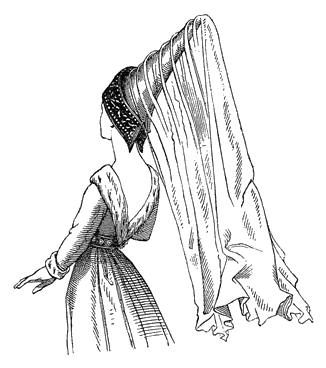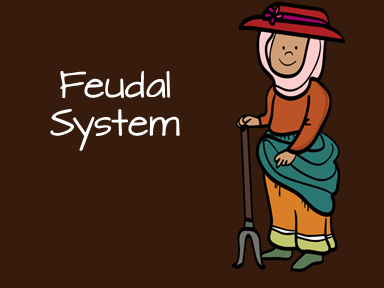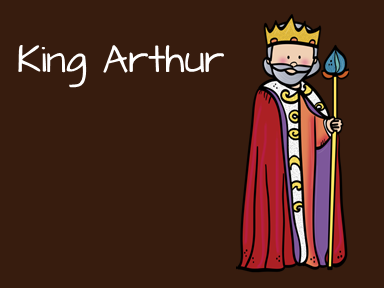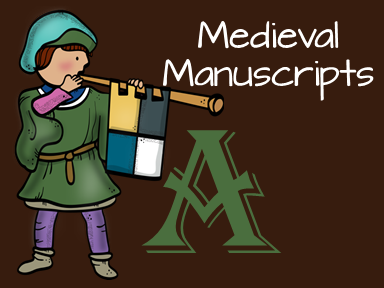During the Middle Ages most people wore clothing made of wool. Undergarments were often made of linen. People rarely cleaned their outer garments, but the linen clothing was cleaned regularly. Unlike the Roman clothes which were just wrapped and tied around the body, the clothes during the Middle Ages were cut and sewn to fit. They had necklines, bodices, sleeves, waists, and legs.
During Medieval Times people bathed about once a month. When cleaning the people used herbs such as lavender flowers and mint instead of soap. These herbs helped keep fleas away. Fleas were a problem since many items were stuffed with straw.
Peasant men wore tunics. The tunics were usually knee length. The women wore sleeveless tunics. Cloaks made from sheepskin, woolen hats, and mittens were wore in the winter. Leather boots were an important piece of clothing. Many of the boots were mid-calf length with turned down or rolled tops.
Wealthy men and women wore brighter colors than the peasants. The men wore tunics. Nobility usually wore their tunics ankle length from the fourteenth century until the mid sixteenth centuries. These were often made of velvet or damask. The men also wore stockings made from wool or silk. During more formal occasions men would wear a loose, sleeveless outer garments called mantles. These were at times embroidered with gold or silver threads. The mantle could even had jewels on them or be lined with fur.
Wealthy women wore ankle length gowns. During the early Middle Ages the gowns were full and loose fitting. The gown had a round neck with a split so it would fit over the head. During the fourteenth century the gowns had fitted bodices with long flowing skirts. The sleeves of these gowns were tight and could have fifty button on each arm.



The wealthy often lined their garments with furs. Diamonds became popular in Europe in the fourteenth century. Gem cutting was invented during the fifteenth century.
Monks wore long woolen habits. The order the monk belonged to could be determined by the color of the habit. For example the Benedictines wore black and the Cistercians wore undyed wool or white.















